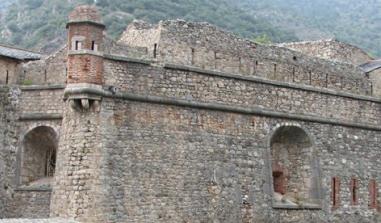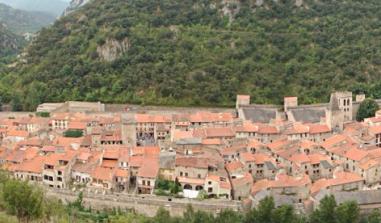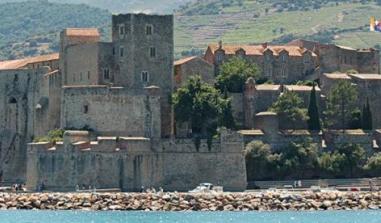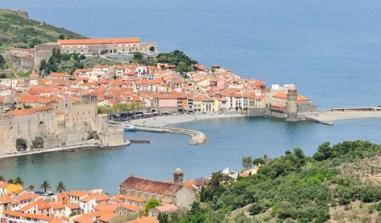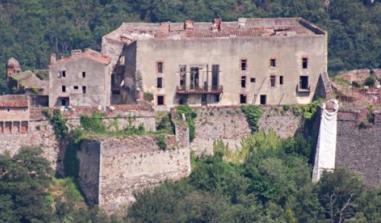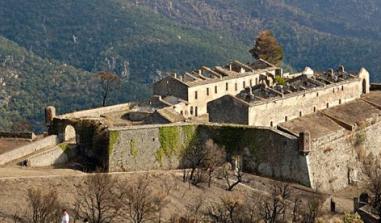Fort Saint-Elme
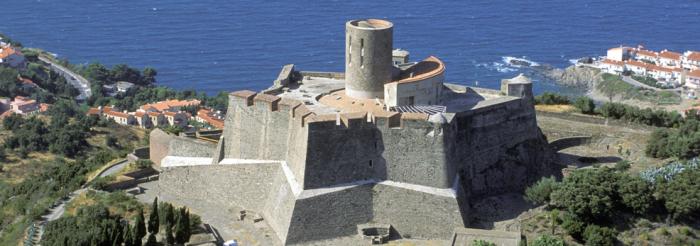
Fort Saint-Elme. Photo ECPAD
From south of the village's port, Fort Saint-Elme overlooks Collioure.
In the far south of the Pyrénées Orientales region, the Côte Vermeille (‘Vermilion Coast’) hugs the Mediterranean sea and is sheltered by the Albera Massif to the west. Nestled in the bottom of a cove along this rocky coastline, the village of Collioure is rich in historic monuments that mix together religious art and military architecture.
In addition to its royal palace built between the 13th and 18th centuries, and its 17th century church known for its phallic bell tower, Collioure is overlooked by Fort Saint-Elme, south of the port. Fort Saint Elme, like the fort in Salses, was erected between 1538 and 1552 by King Charles V to protect the Spanish Kingdom (Castile and Aragon) and help fight the French in Italy and lead the war up to the north of France and Burgundy. Importantly Charles V was the great grandson of Charles the Bold (Duke of Burgundy), a Burgundian prince who was desperate to take back Dijon (Duchy of Burgundy) occupied by Louis XI in 1477. To fight in the north, it was important to be protected in the south.
Saint Elme (St. Elmo in English) is the patron saint of sailors and the fort does actually resemble a ship protecting Collioure and Port-Vendres.
Its star shape also prefigured the architectural style of Vauban. In the mid-16th century, Charles V built a fortified redoubt around the medieval keep, not that this offered any resistance to Vicomte de Turenne. Often called simply Turenne, he captured the fort in 1642 after a siege that lasted several weeks and allowed the defenders to leave with “all arms and flags flying”, in other words with the honours of war. After Collioure was annexed to France by the Treaty of the Pyrenees in 1659, Vauban came to inspect the region’s defence system and decided to reinforce the fortifications by building barrack buildings protected by moats.
Fort Saint-Elme was further modernised in the late 18th century with the addition of a water tank and a network of underground tunnels to protect the inhabitants from artillery fire. Invaded by the Spanish in December 1793, the fort was soon after besieged by French troops led by General Dugommier.
Situated on a crest overlooking the fort, a battery, converted into a redoubt in 1844, is a still-standing testament to this siege that ended in May 1794 following the victory of the French, who reclaimed Collioure and its fortifications.
Fort Saint-Elme was a private property from 1913 and requisitioned in 1942 by the occupying troops before it was pillaged in 1944 when they decamped. Entered in the inventory of historic monuments in 1927, the fort is now open to the public.
Collioure Tourist Information Office
Place du 18 juin 66190 Collioure
Tel: +33 (0)4 68 82 15 47
Fax: +33 (0)4 68 82 46 29
Email: contact@collioure.com
Getting there: 30 km (19 miles) from Perpignan via the N114.
Collioure Tourist Information Office
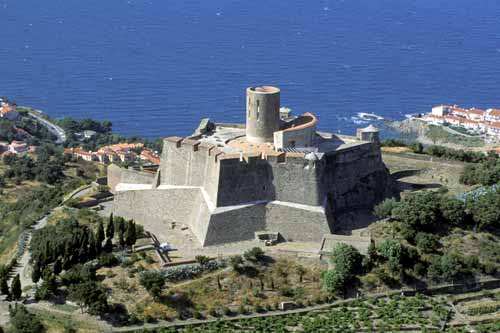
Le fort de Saint-Elme. Photo ECPAD
Practical information
66190
Collioure
Tél. 04.68.82.15.47Fax 04.68.82.46.29
Tarifs individuels : Gratuit pour les moins de 12 ans. RSA, chômeurs (présentation carte) : 2€. Jeunes et étudiants : 3€. Adultes : 6€. Pass intersites : 4€ Handicapé individuel : Gratuit sur réservation Tarifs groupes (mini 10 personnes) : 30 €
Tous les jours, du 1er avril au 30 septembre : de 10H30 à 19H00 (visite guidée l'après-midi). Du 1er octobre au 11 novembre : de 14H30 à 17H00



